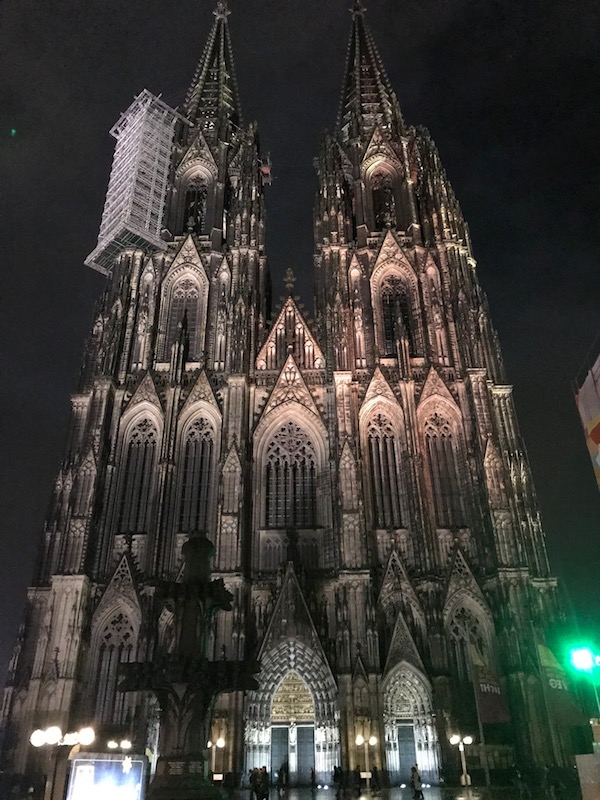Our Blog - Cologne Cathedral
Now let's talk about World War II. Cologne was heavily damaged by 262 separate air rads by allied forces. In 1945, architect and urban planner Rudolf Schwarz called Cologne the "world's greatest heap of rubble". Approximately 95% of the city center was destroyed (totally or partially), including most of the 12 Romanesque Churches (a few of which were in the main Cologne blog). Schwarz designed the master plan for reconstruction in 1947, which included the construction of several new thoroughfares through the city center.
At the end of the World War II, the cathedral appeared to be mostly unscathed compared to the almost-completely-destroyed inner city. In fact, the cathedral was severely damaged by around 70 bomb hits. Of the 22 vaults in the nave and transept, nine were destroyed and six were badly damaged. The gable of the northern transept broke down; all window tracery was damaged and the large west window was destroyed. The roof remained thanks to the stability of the iron roof structure. The air pressure caused by the explosion of air mines was able to escape through the large windows. Part of the tremors could be absorbed by the extremely deep foundation. Until 1948, only the choir could be used. The restoration of the nave and transept took until 1956. The last visible war damage was only fixed in 2005.


In front of the western entrance to Cologne Cathedral is an arch from the former northern gateway into the Roman city. The Roman city wall was almost four kilometers long and had at least nine gates and 19 round towers. The gate was built when the Roman city was founded in 50 AD.

On the ground in front of the Cathedral, there were these two guys that were drawing flags from around the world in chalk on the pavement. You can see money on some of the flags ... this is from people giving them money "for their art" on the flag of their home country (or I assume their home country).
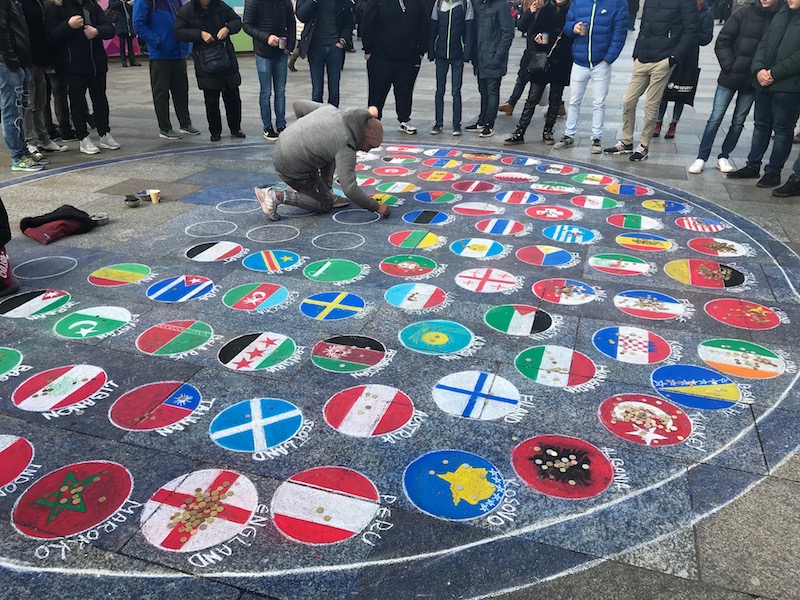
The main site in the city is the Cologne Cathedral. Begun in 1248, the building of this Gothic masterpiece took place in many stages and was not completed until 1880. Over 7 centuries, the various builders kept absolute fidelity to the original plans. Many people discuss whether or not to clean the Cathedral and return it to the former "glory", normally a light sandstone color instead of the black soot which has accumulated on the church over the centuries. In this case, they do not actually go through and clean the Cathedral. They continually do maintenance on the church, and our tour guide mentioned that they believe the church is "unfinished", and if the church is ever "finished", that would mean the end of the world ... you can see scaffolding in various places. One of the main Christmas markets is in the courtyard next to the church (called the "Dom") and you can see some of the market chalets with the church in the background (this was early, so they weren't opened yet).
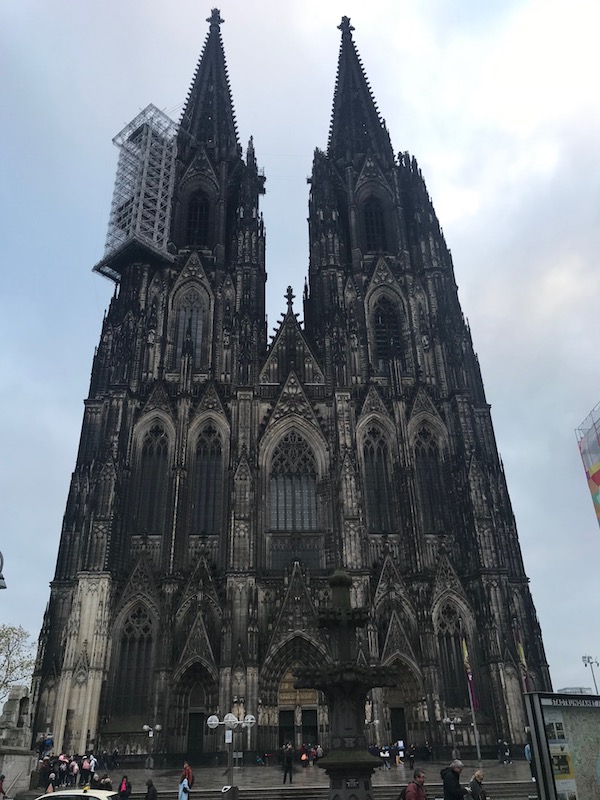

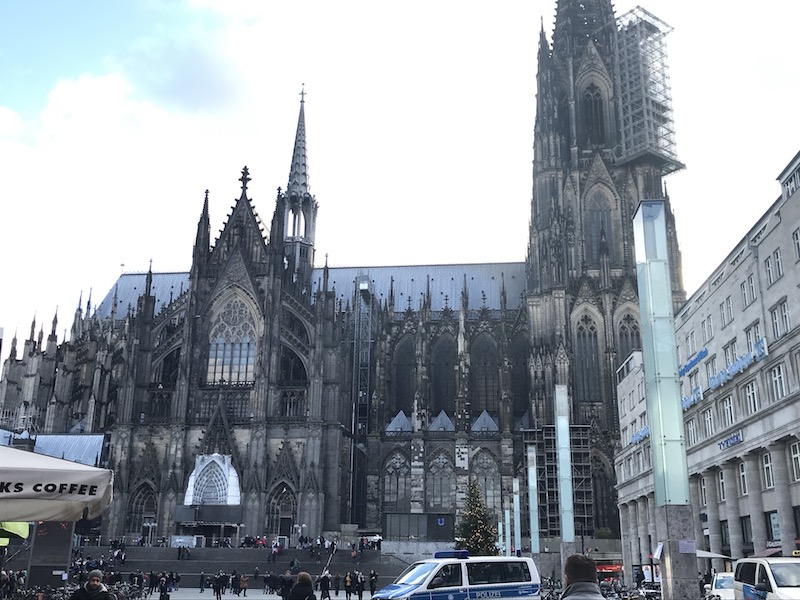
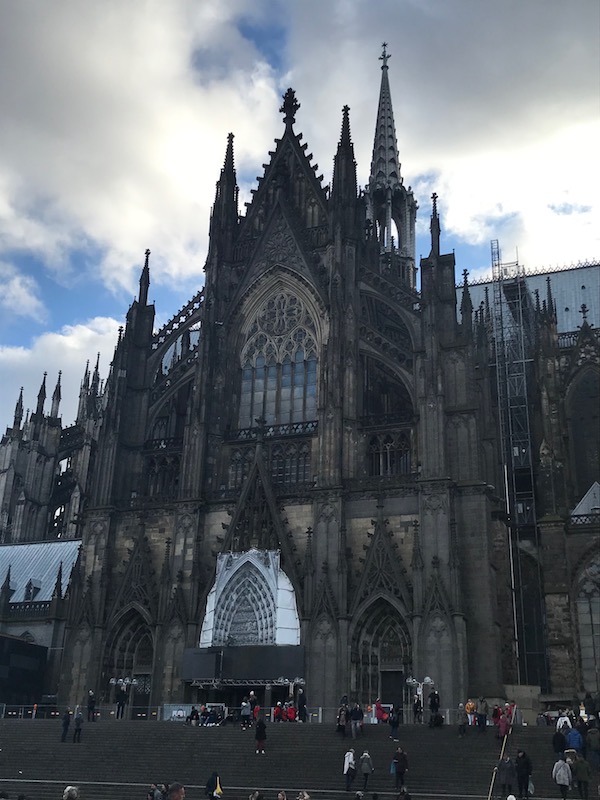


The far-right door is called the St. Peter portal which highlights the spreading of Christ's teachings by his chosen apostles. The St Peter portal is the only one of the cathedral's twelve portals to have been at least partially completed during the Middle Ages. It was used as a template for the design of the other portals in the 19th century. The statues that decorate the door were created between 1370 and 1380, and they include the 12 apostles with Matthias and Barnabas. The Tympani contains scenes from the lives of the apostles Peter and Paul.

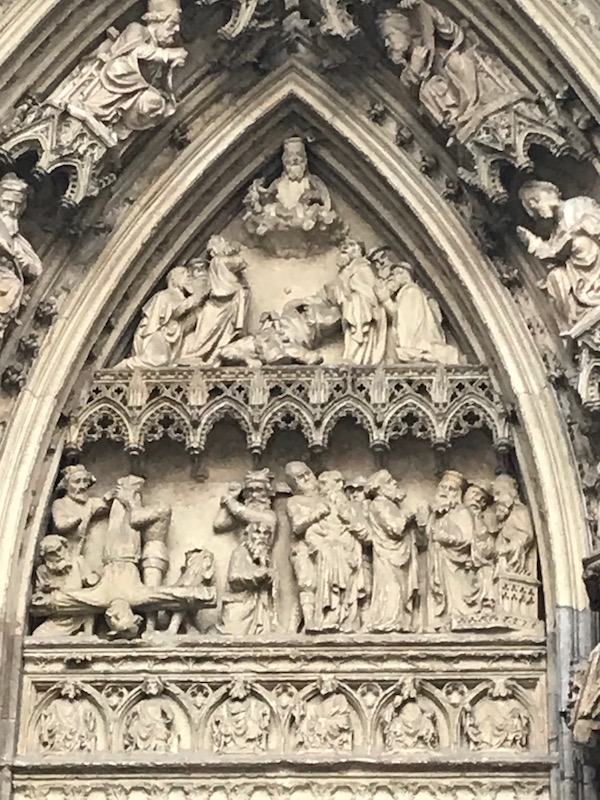

The theme of the main portal is the age before redemption. The four rows of the Tympani show scenes from the Old and New Testaments including the Fall of Man; Noah's ark, Moses receiving the Tablets of the Law, and the Worship of the Golden Calf; the Annunciation, the Nativity, and the Presentation of the Christ Child in the Temple; and Christ among the Doctors, the Baptism of Christ, and the Sermon on the Mount. There are statues of Emperors flanking the main portal, including Constantin the Great, Charlemagne, Henry II, and St. Stephen of Hungary.

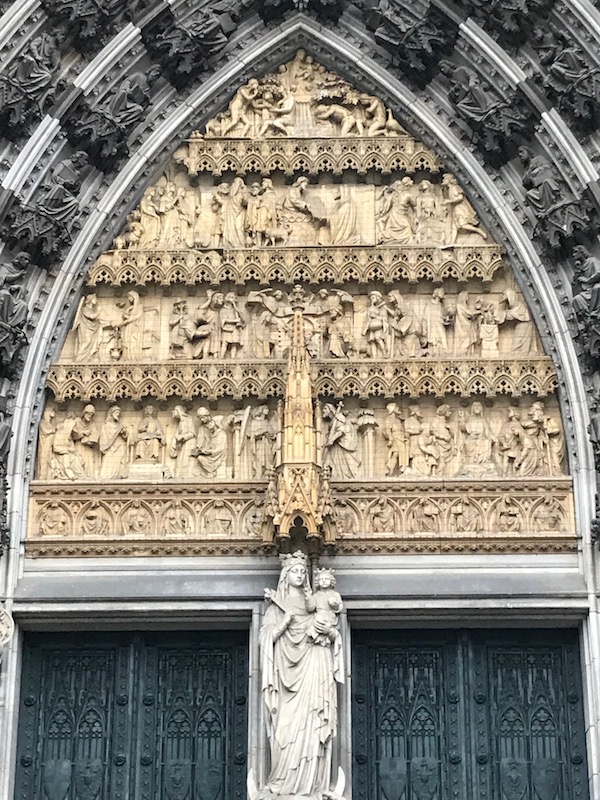
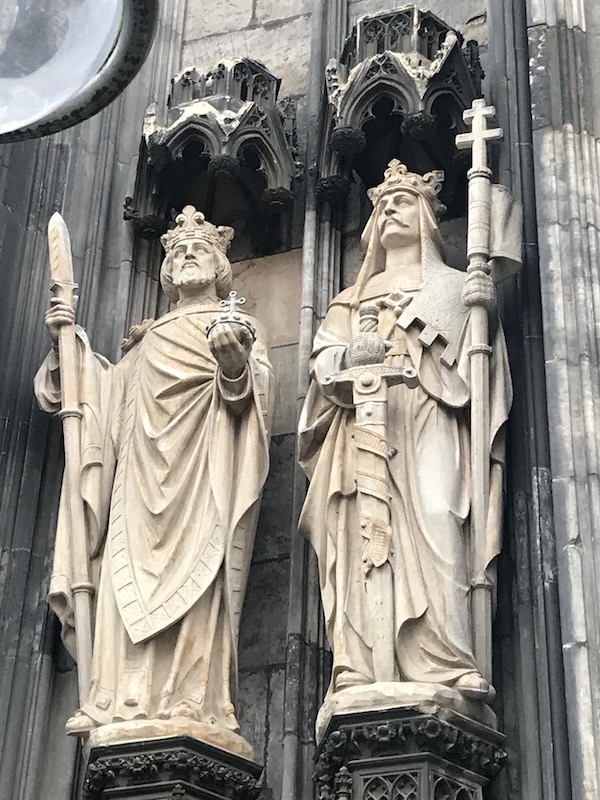
The Magi Portal illustrates the Appearance of the Son of God to the peoples of the world, and was damaged during the war.

In November 1943, an explosive bomb in the North tower tore a 10 meter high hole in the corner pillar. The hole was walled up with a brick filling during the war, which remained visible as a so-called Cologne cathedral seal until 2005. It was then covered with sandstone, hence the different color. This was *not* a cleaning job :-)
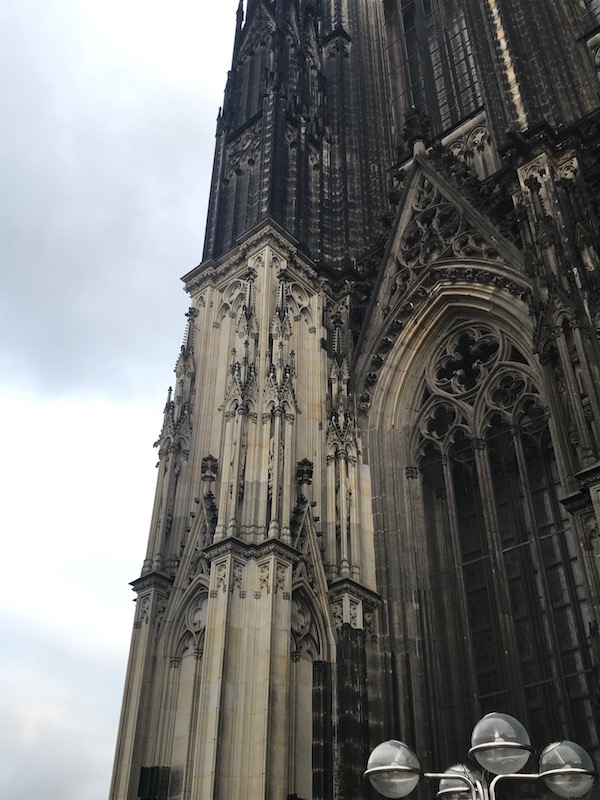
The plan is in the shape of a Latin Cross, as is usual with Gothic cathedrals.
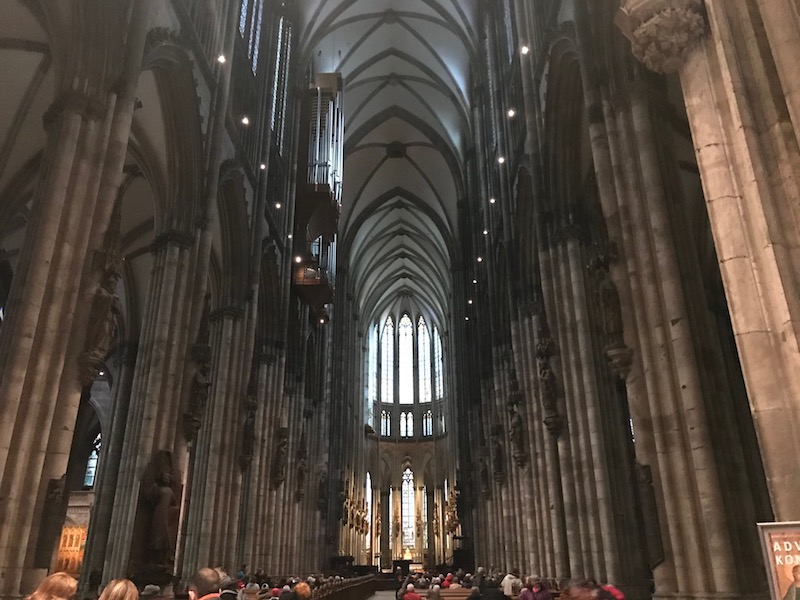

The entire architecture of Cologne Cathedral is designed to accommodate windows that are as large as possible. The windows cover an area of around 10,000 m², which corresponds approximately to the base area of the building. Around 1,500 m² of the window area has been preserved from the Middle Ages, the oldest dating back to 1260. Here are some that I took that I thought were quite nice that I don't have much additional information on.


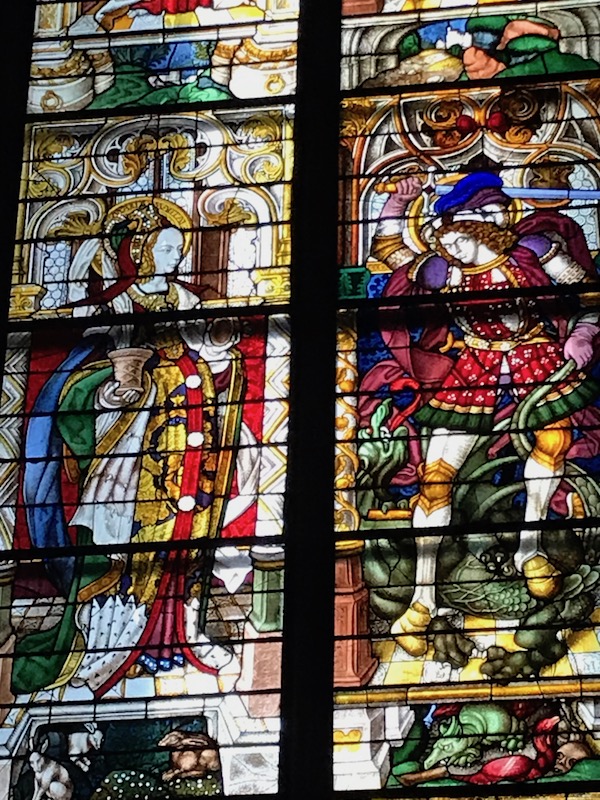
The Coronation window, with the central image of Christ and Mary sitting crowned on a throne. Below them is a structure that looks like steps, representing the throne of Solomon, the twelve lions on the steps representing the apostles. In the upper canopies, there are six angels guarding the city of heaven, including prophets with banners.
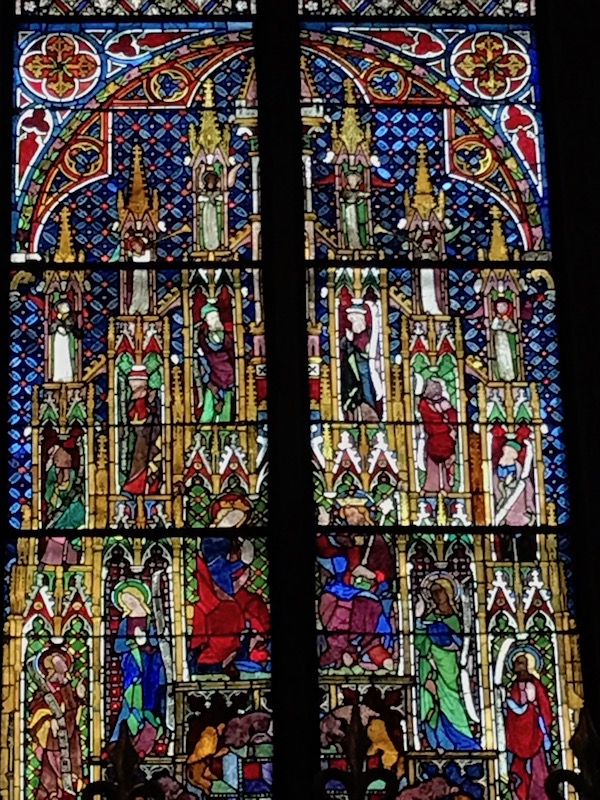
A set of 5 windows on the Southern side are called the Bayern window, donated by King Ludwig I. The first 2 pictures show the Worship window, completed in 1846. Next is the Mourning window, showing the lamentation of the dead Christ, who rests in his mother's lap. After that is a real close-up of the center picture of the Whit window, showing the descent of the Holy Spirit on the day of Pentecost, an event celebrated as the day the Church was founded. The last two pictures are the Stephen window. The first depicting the martyrdom of St. Stephen being stoned to death, and the second showing part of the base that have saints who are particularly venerated in Cologne, as well as the Bavarian coat of arms and the donation inscription of King Ludwig I from 1848.
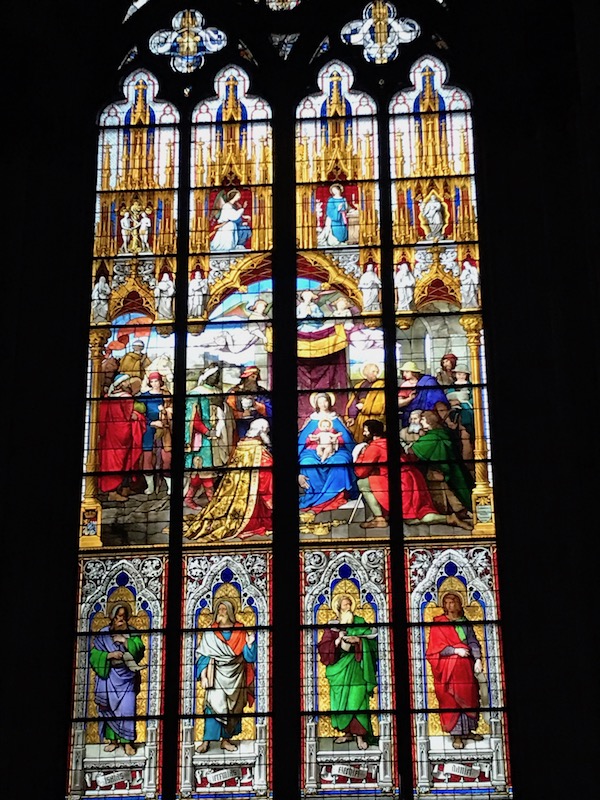
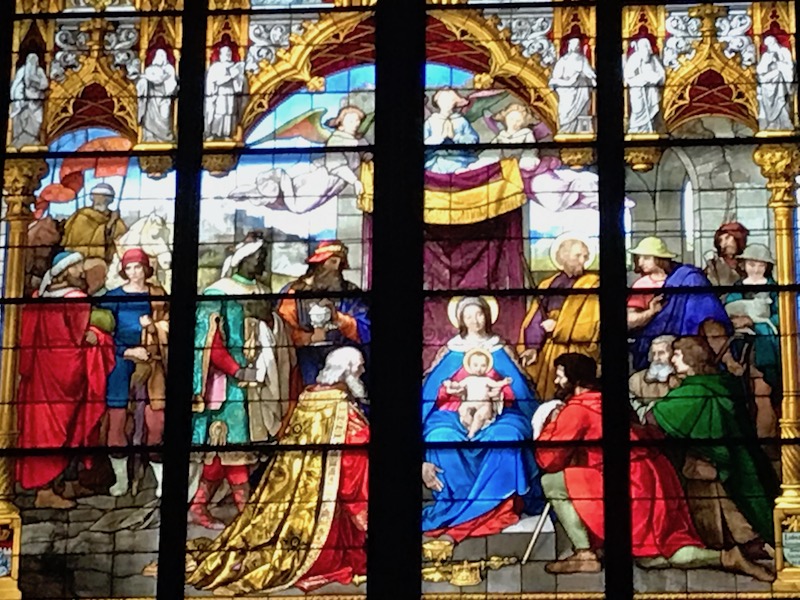


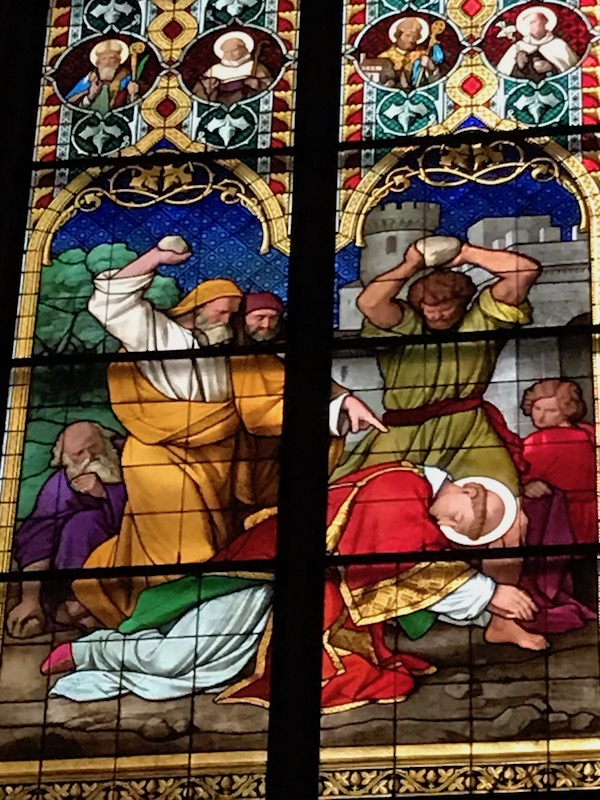

These are the "Older Bible windows and show a set of images from the Old and New Testaments (Old on the left, New on the right). The New Testament salvation events go from the birth of Mary to the Ascension of Christ, framed by Old Testament prophets. On the 2nd picture, you can see Noah's Ark (left side, 2nd from bottom). The 3rd picture shows the birth of Our Lady Mary on the right-hand New Testament side (St. Anna, Maria's mother, is resting on a bed and watching servants bathing the newborn child). The parallel picture of the Old Testament railway on the left shows the creation of Eve. Eve stands before God the Father, who raises his hand in blessing. On the right in the picture you can see the sleeping Adam, from whose rib Eva was created. The connection between the two scenes is based on the medieval idea of Maria as the new Eve. Then a closeup of the creation of Eve in the 4th picture.
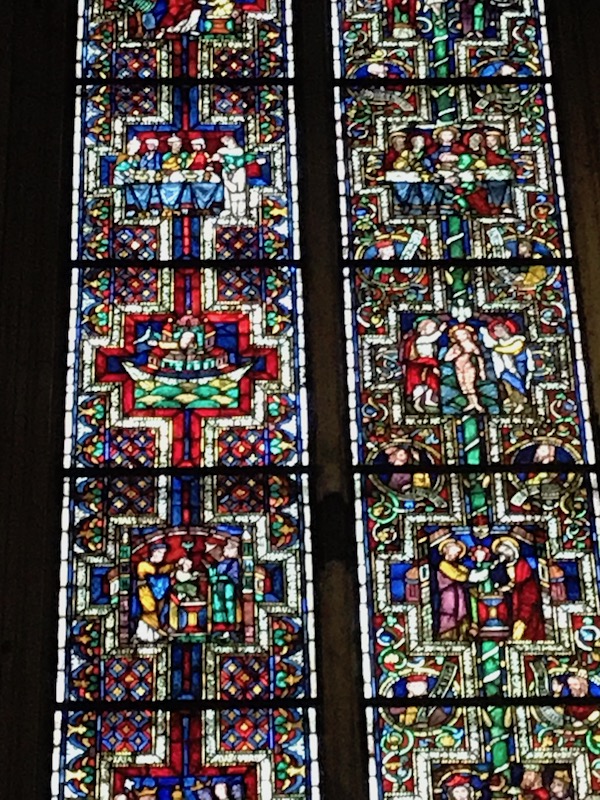
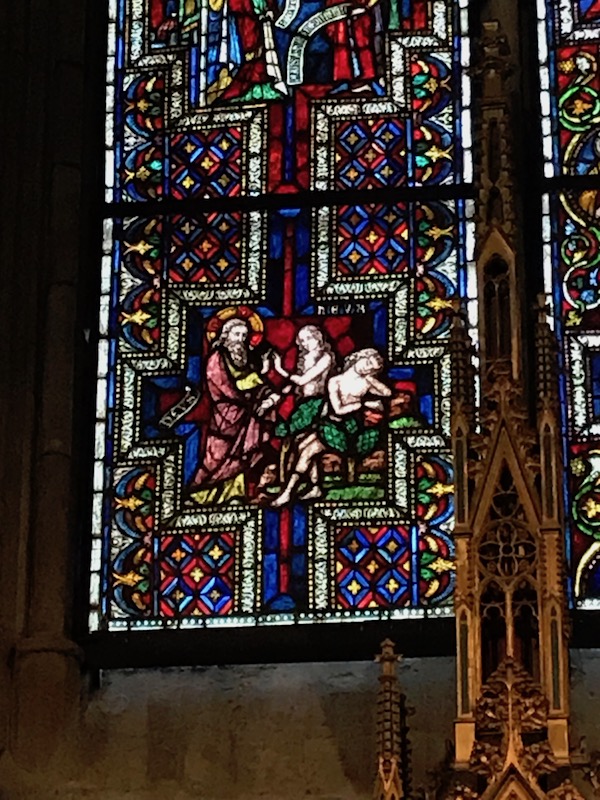

These are part of the Jesse window, dating from 1509.
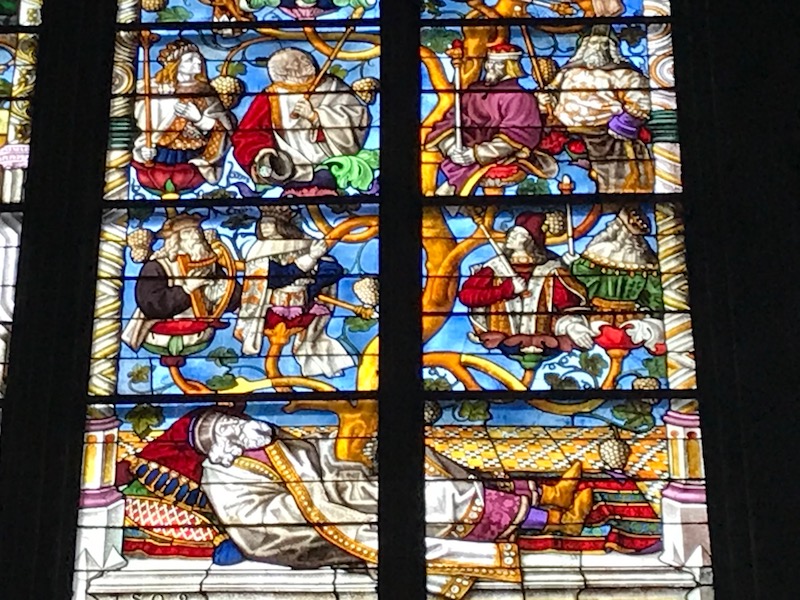
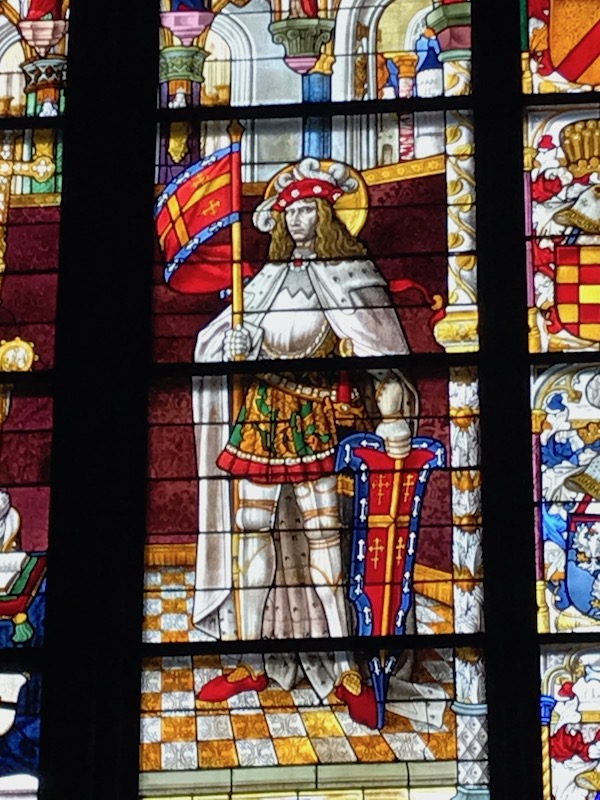
There is one modern stained glass window, in the South transept, created in 2007. The original 1843 window was destroyed in World War II and replaced in 1948 by a simple, colorless window. The window contains 72 colors, all chosen from the 18th century medieval windows that remain in the Cathedral and the squares were arranged by a random number generator. However, there are 6 "lanes" of tiles, and if you look closely, you will see that 1 and 3 are mirror images, as are 2 and 5, and 4 and 6.

This sculpture shows the 13th Station of The Cross, with Christ’s body being taken down from the cross.
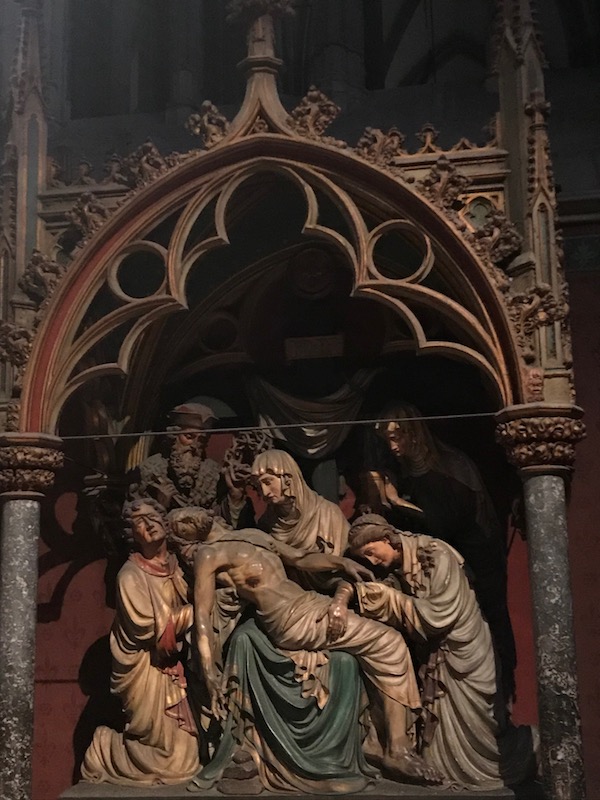
A large stone statue of St Christopher, patron saint of travelers, looks down towards the place where the earlier entrance to the cathedral was, before its completion in the late 19th century.

There are several another triptychs in the church (3-panel pictures or relief carvings, hinged together that open and close, normally used as an altarpiece). This one is the Saint Agilulfus altarpiece, which is one of the most important of all Antwerp-carved altarpieces. Created around 1520, it features scenes from the Passion of Christ as well as life stories of St. Anno and Saint. Agilulfus. While not originally here, it was most likely moved to the cathedral in 1817.

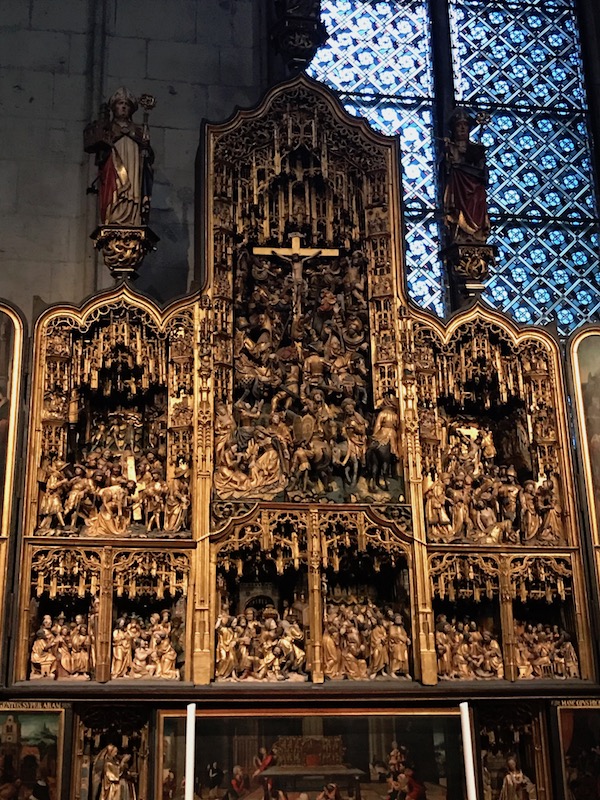
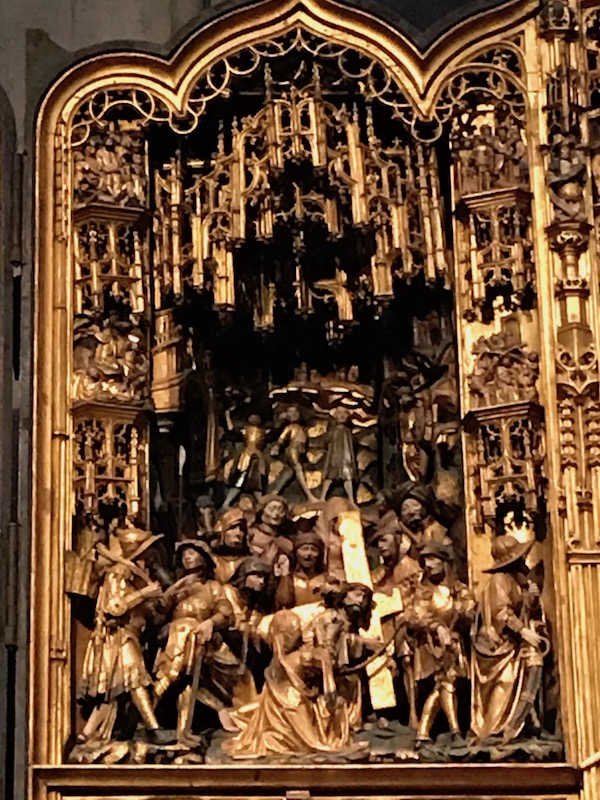
The previous triptych was open, and this is what one looks like when closed and showing only 2 frames of the painting. This is the closed view of the Altar of the city cartridge, painted by the Cologne painter Stefan Lochner around 1442. It shows the angel's announcement to Mary.
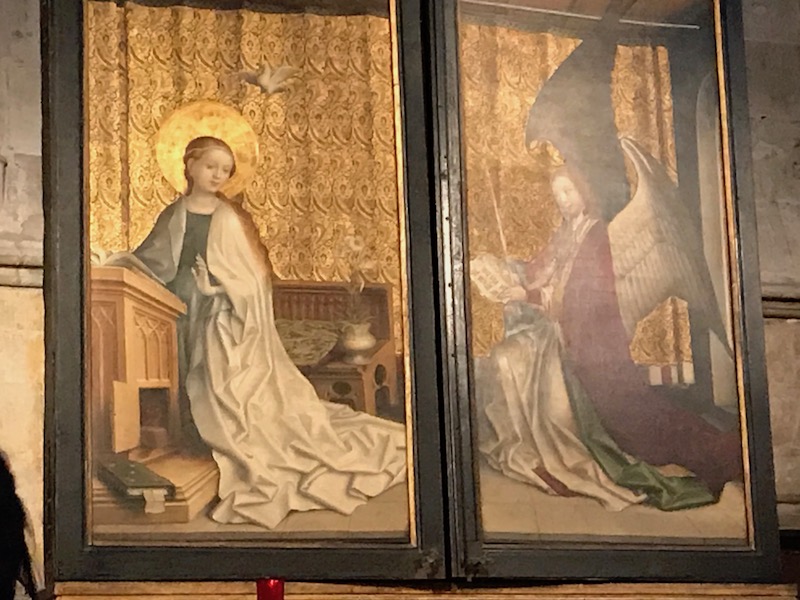
One treasure is the High Altar, which was installed in 1322. It is a brick table covered with black marble, with a solid 15-foot long slab forming the top. The front and sides are overlaid with white Carrara marble niches into which are small statuettes (some individual figures representing prophets, apostles and saints as well as multi-figure groups showing scenes from the life of Mary). You can see the Shrine of the Magi behind it (more details on it next).
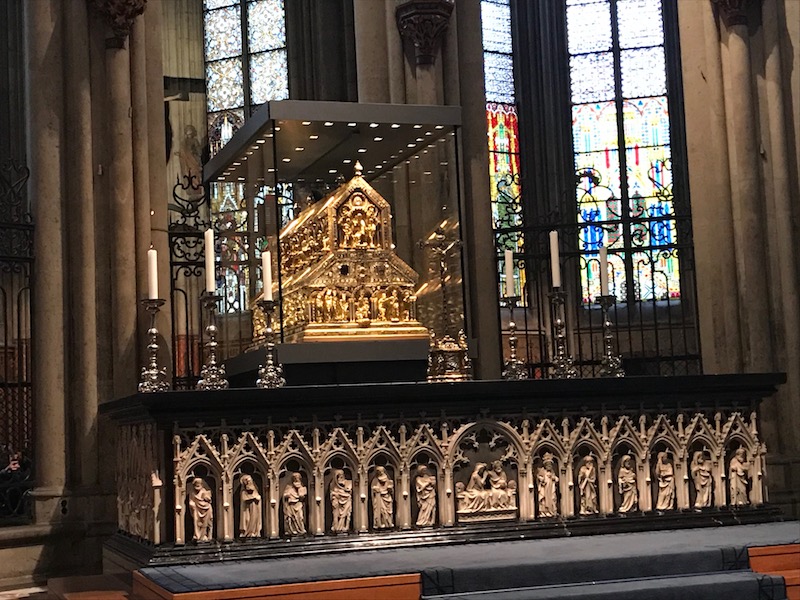
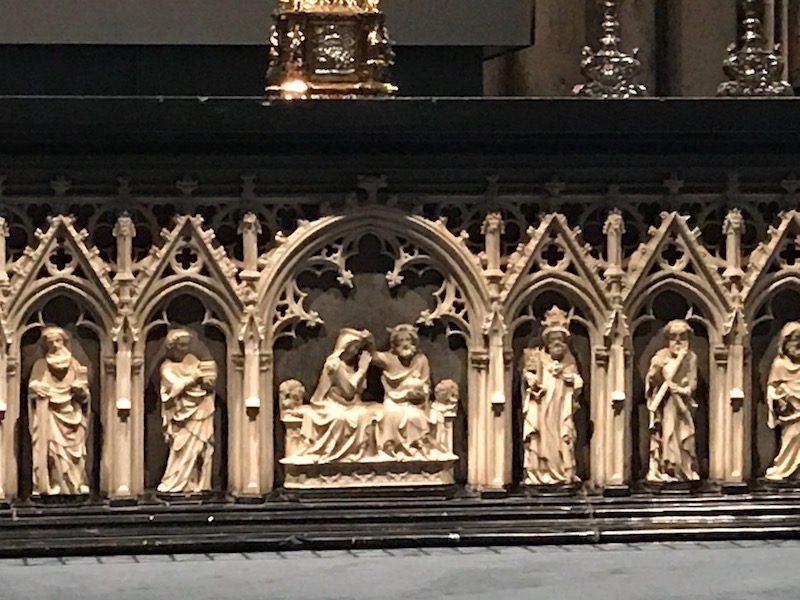
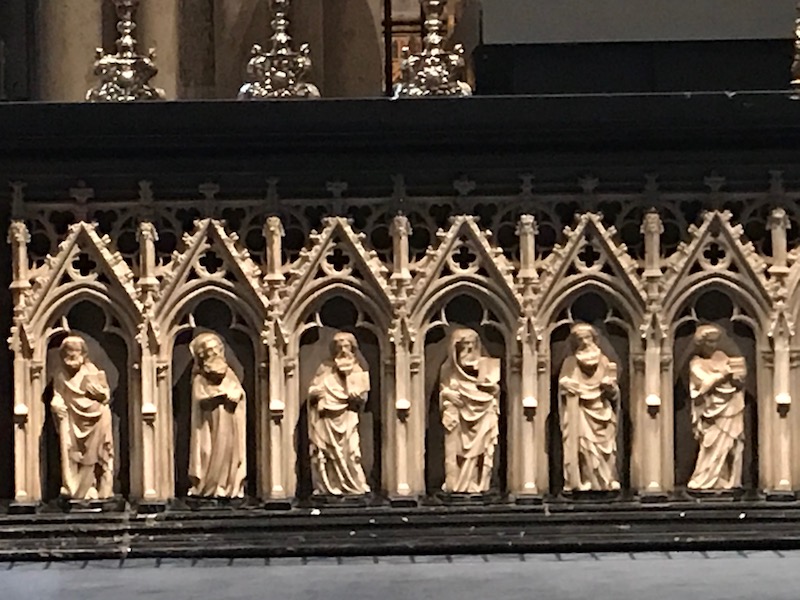

The most celebrated work of art is the Shrine of the Magi (also called the Epiphany shrine). The bones of the Magi (the 3 kings that visited the baby Jesus) were brought from Milan to Cologne in 1164, and the shrine was made from around 1190 to around 1220. The shrine takes the form a large reliquary in the shape of a basilican church, made of bronze and silver, gilded and ornamented with architectonic details, figurative sculpture, enamels and gemstones. The decoration covers the history of salvation from the beginning of time to the world judgment.

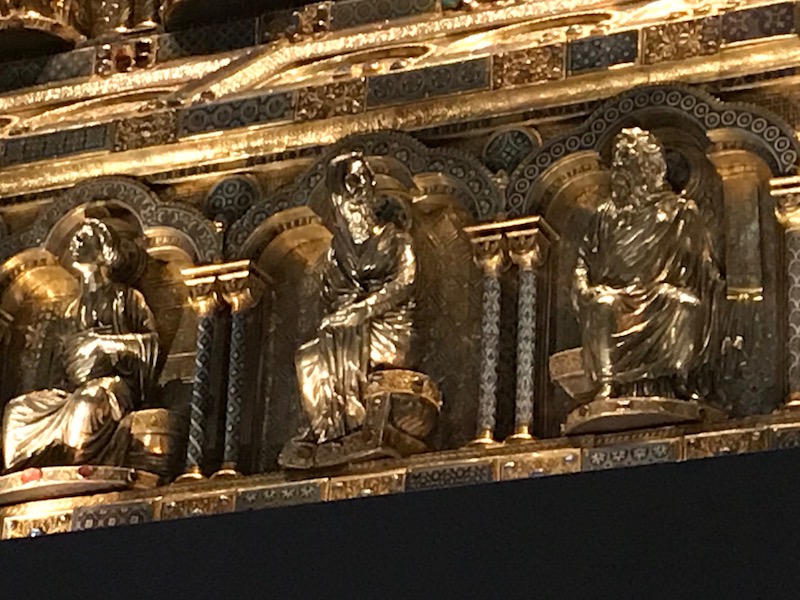
The choir barrier paintings are one of the largest of the early 14th century in Germany. There are several different murals, this one being part of the Peter Barrier. It shows seven scenes from the life of Dompatrones Peter.

The choir retains a great many of its original fittings, including the carved oak choir stalls (1308-11), which is made the more surprising by the fact that French Revolutionary troops had desecrated the building.
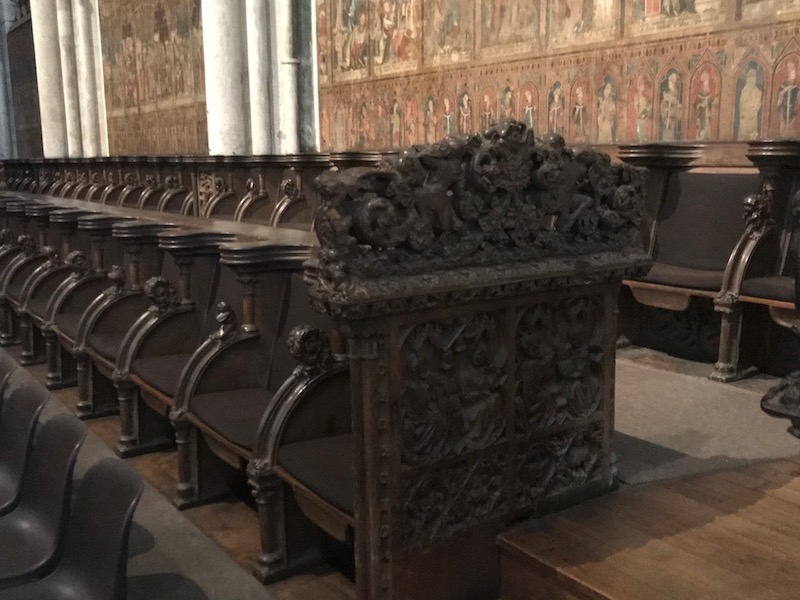
The floor mosaic, which was completed in 1899, measures 1,350 square meters and is the largest work of art in the cathedral. There are mosaics across almost the entire floor, including each of the side chapels. The Cathedral in Cologne is meant to be the Cathedral for all of Germany, and the mosaics in the choir attempt to personify that. It is a group of eight mostly crowned women who sit on richly decorated thrones and represent the great Christian nations of the old world. A model of the main church of their country is attached to them as an attribute.
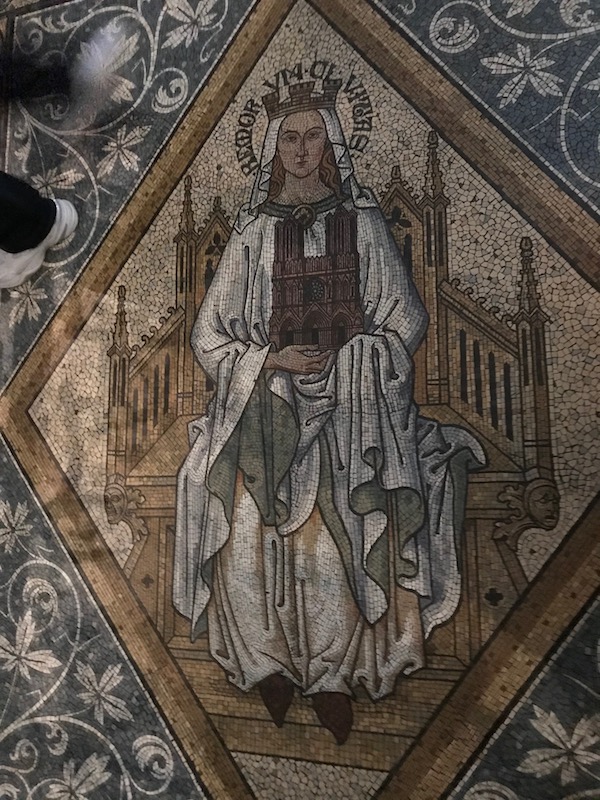
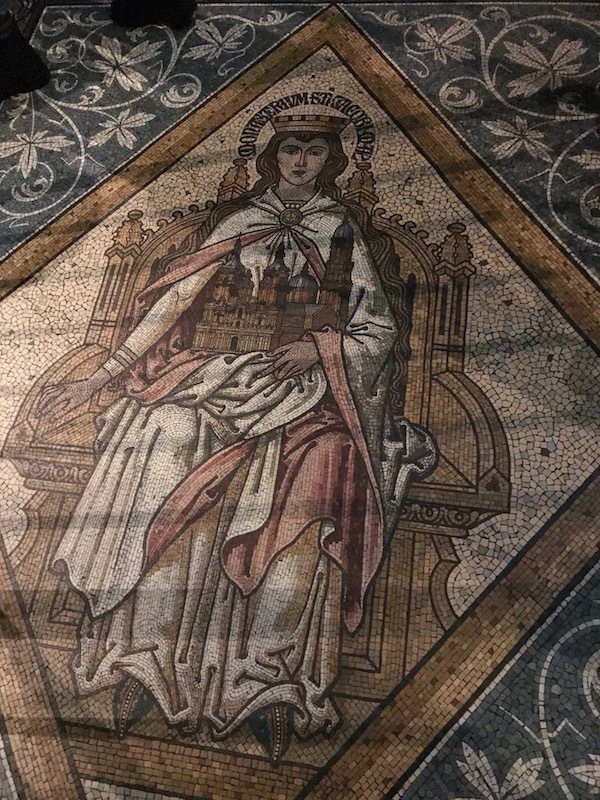
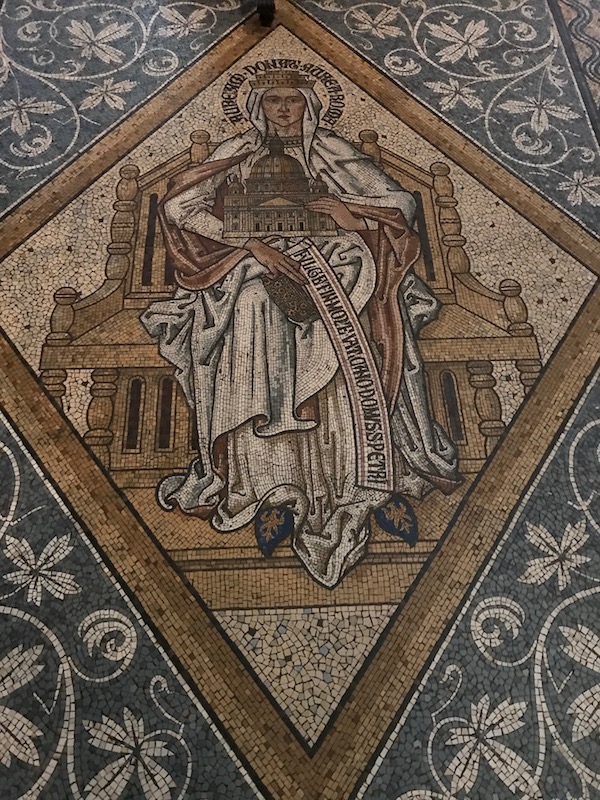
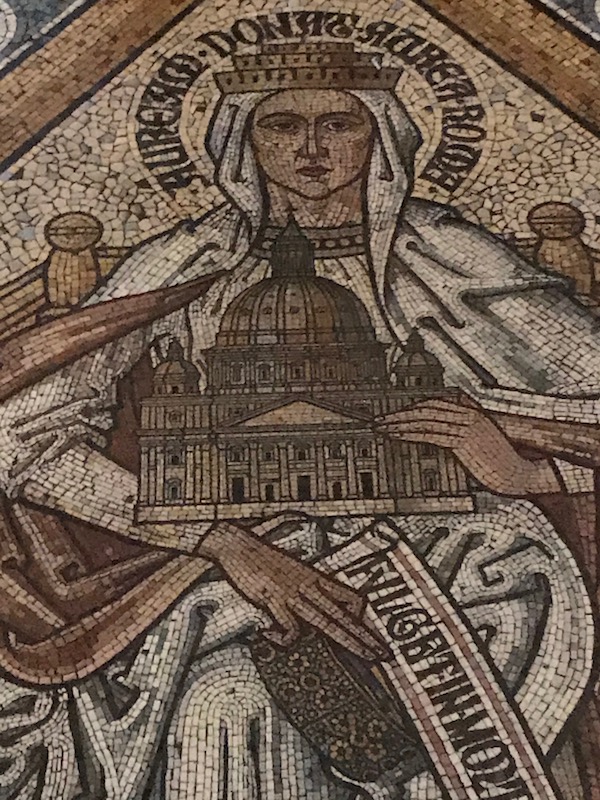

Near the sacristy is the Gero-Kreuz, a large crucifix carved in oak, with traces of paint and gilding. Believed to have been commissioned around 960 for Archbishop Gero, it is the oldest large crucifix north of the Alps and the earliest-known large free-standing Northern sculpture of the medieval period.

And a couple with the cathedral main entrance at night.
